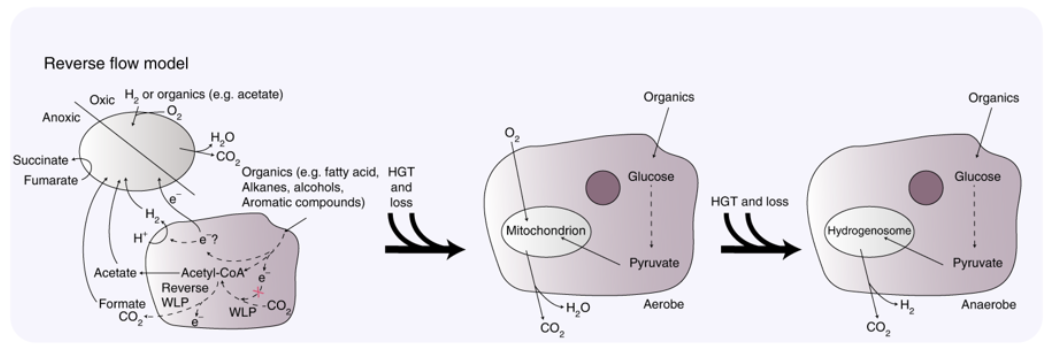Our new paper in collaboration with Thijs Ettema’s lab describes a new model for the partnership that led to the origin of eukaryotes.
Summary
The origin of eukaryotes represents an unresolved puzzle in evolutionary biology. Current research suggests that eukaryotes evolved from a merger between a host of archaeal descent and an alphaproteobacterial endosymbiont. The discovery of the Asgard archaea, a proposed archaeal superphylum that includes Lokiarchaeota, Thorarchaeota, Odinarchaeota and Heimdallarchaeota suggested to comprise the closest archaeal relatives of eukaryotes, has helped to elucidate the identity of the putative archaeal host. Whereas Lokiarchaeota are assumed to employ a hydrogen-dependent metabolism, little is known about the metabolic potential of other members of the Asgard superphylum. We infer the central metabolic pathways of Asgard archaea using comparative genomics and phylogenetics to be able to refine current models for the origin of eukaryotes. Our analyses indicate that Thorarchaeota and Lokiarchaeota encode proteins necessary for carbon fixation via the Wood–Ljungdahl pathway and for obtaining reducing equivalents from organic substrates. By contrast, Heimdallarchaeum LC2 and LC3 genomes encode enzymes potentially enabling the oxidation of organic substrates using nitrate or oxygen as electron acceptors. The gene repertoire of Heimdallarchaeum AB125 and Odinarchaeumindicates that these organisms can ferment organic substrates and conserve energy by coupling ferredoxin reoxidation to respiratory proton reduction. Altogether, our genome analyses suggest that Asgard representatives are primarily organoheterotrophs with variable capacity for hydrogen consumption and production. On this basis, we propose the ‘reverse flow model’, an updated symbiogenetic model for the origin of eukaryotes that involves electron or hydrogen flow from an organoheterotrophic archaeal host to a bacterial symbiont.

